A Potent Source of Antioxidants
Beyond its impact on mood, saffron also provides strong antioxidant protection. In our modern lifestyles, oxidative stress from pollutants and daily toxins is unavoidable. Antioxidants help defend cells from damage by neutralizing free radicals, which are unstable molecules that can harm tissues and accelerate aging.
Incorporating saffron into your daily wellness routine not only nurtures your mental state but also gives your body extra support at the cellular level. This rare and precious spice blends emotional harmony with physical vitality — a natural ally for both mind and body.
Saffron and Its Remarkable Benefits: a Natural Booster for Mind and Body

Saffron is far more than a colorful culinary ingredient, it holds an impressive reputation for supporting emotional well-being. Known for its golden hue and delicate flavor, this ancient spice has been linked to enhanced mood and mental clarity. Saffron may help elevate serotonin levels, often referred to as the "feel-good" chemical in the brain. Regular use has been associated with a noticeable lift in mood and a reduction in mild symptoms of anxiety and depression.
The mental health benefits of saffron come largely from two key compounds: crocin and safranal. These natural elements have been studied for their ability to positively influence neurotransmitters, which play a crucial role in regulating mood. By including saffron in your diet whether through teas, supplements, or food, you may find a gentle, plant-based way to support emotional resilience and balance.

How Saffron Supports Emotional Balance?
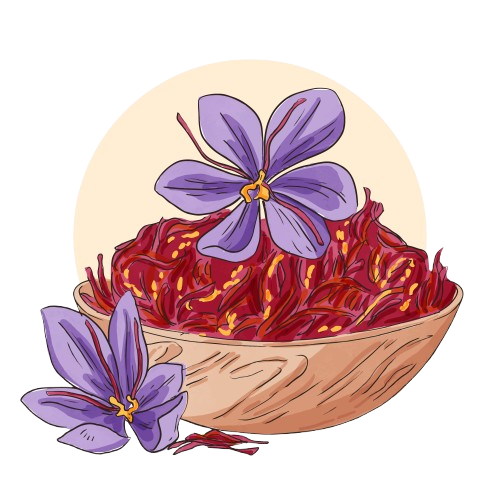
Mental Wellness Meets Antioxidant Power
Picture enhancing your emotional well-being while giving your body a boost of antioxidant protection, all with a single, natural ingredient. Whether you're managing daily pressures or navigating more demanding moments, saffron stands out as a valuable ally in your self-care journey.
This vibrant spice offers holistic support, benefiting both the mind and body. Adding saffron to your daily rituals — whether in meals or drinks — is a flavorful and nourishing way to support your mental clarity and overall vitality.

Tips for Getting the Most Out of Saffron
To unlock saffron’s full potential, consider these simple yet effective tips:
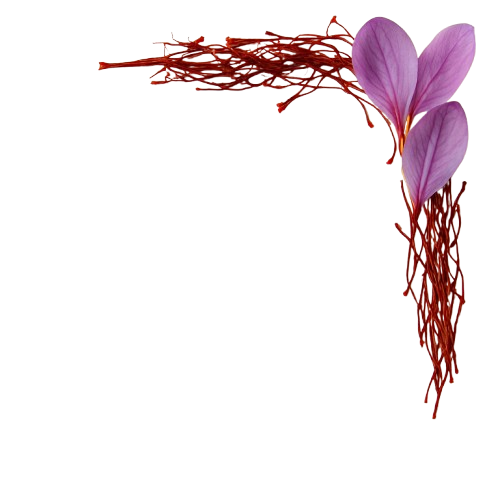
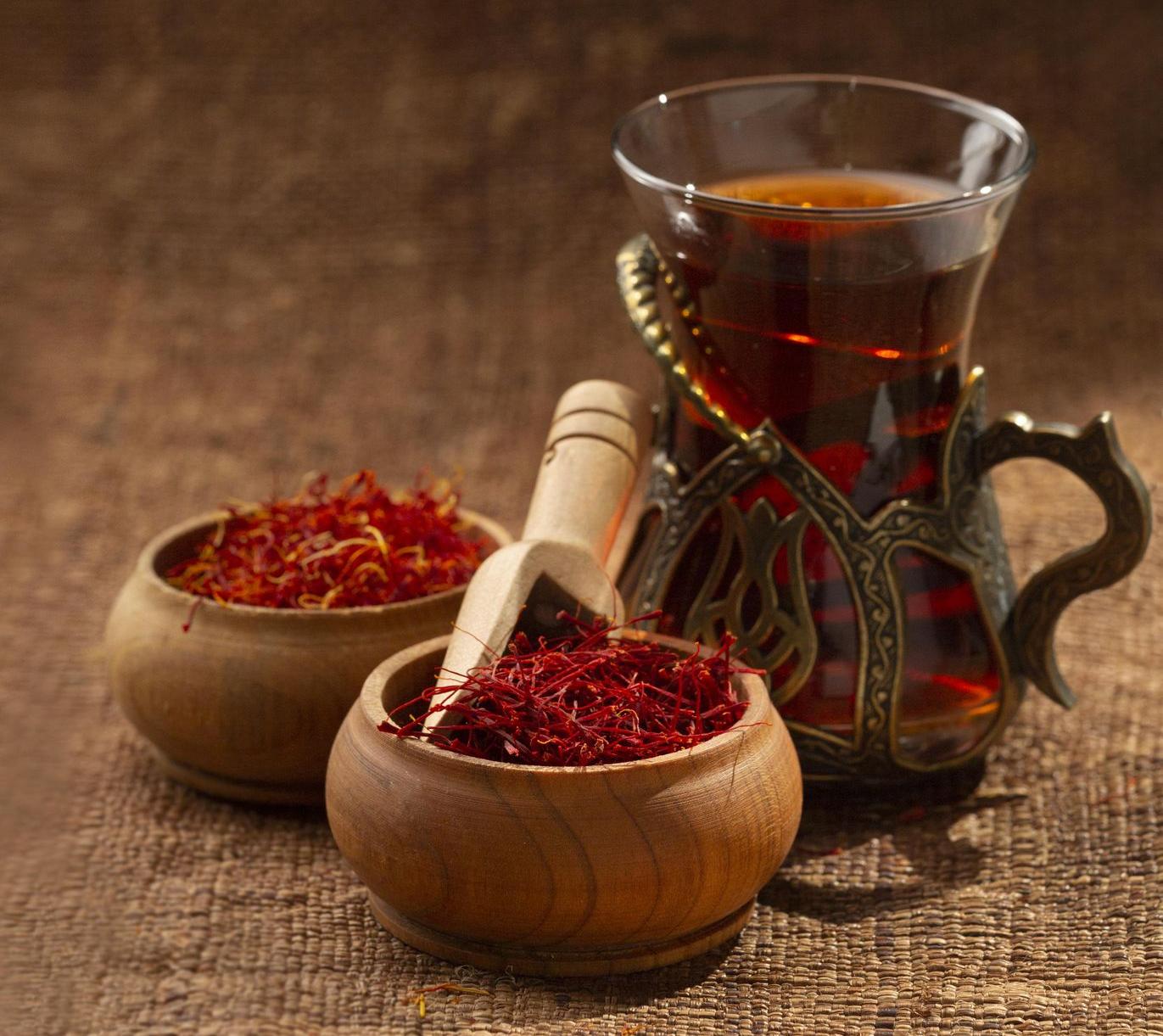

* Enjoy as a tea: Brew the soaked threads in water below 60°C for a calming herbal infusion that promotes relaxation and emotional balance.
* Go for quality: Always opt for genuine saffron threads instead of powder. Whole threads preserve more of the spice’s essential oils and nutritional value.
*Pair with other ingredients: Saffron works beautifully with ingredients like cardamom, cinnamon, honey, or citrus. Combining it with such elements can enhance both its flavor profile and potential health effects.
* Soak to activate: Let the threads sit in warm water or milk for 15–20 minutes. This helps release their rich color, aroma, and active compounds.
* Add to cooking thoughtfully: Blend the infused saffron into your favorite recipes like rice dishes, stews, or desserts to enhance both taste and benefits.
The Flavours That Love Saffron
Saffron doesn’t like to shout—yet it transforms everything it touches. Its delicate bitterness and honey-like floral aroma pair beautifully with a wide range of ingredients, both sweet and savoury.
Citrus fruits such as orange, grapefruit, and lemon enhance its natural brightness, while warming spices like cinnamon, chili, and star anise deepen its complexity. Nuts, including pistachios and almonds, offer a rich, creamy contrast that complements saffron's earthy tones.
Root vegetables and alliums—like onion, garlic, and leek—help saffron shine in savoury dishes, bringing balance and subtle depth. For those with a sweeter palate, fruits like fig, mango, pomegranate, and blackberry pair surprisingly well, lifting saffron’s floral notes into elegant desserts and drinks.
These natural companions don’t just bring colour to the plate—they bring harmony to the flavour. Whether you're crafting a bold rice dish, a creamy sauce, or a refined dessert, saffron effortlessly finds its place among them.
Let the ingredients guide you—saffron knows how to make them sing.

The Art of Cooking with Saffron: A Culinary Experience
Saffron’s Golden Touch in the Kitchen
1. Rice Dishes & Risottos
For dishes like risotto, bloom saffron threads in warm water or broth before adding them to your rice. This gentle soaking coaxes out saffron’s signature aroma and rich golden color, bringing a luxurious depth to your meal.
2. Sweet Inspirations
A tiny pinch of saffron can transform desserts like custards, panna cotta, or ice cream. Its delicate floral notes enhance sweetness and leave a lasting, elegant fragrance on the palate.
3. Saffron-Infused Drinks
Try saffron in a soothing tea or a revitalizing honey drink. Simply steep the threads in warm water, then mix with honey for a naturally fragrant and flavorful beverage experience.
The Art of Patience
Cooking with saffron is a slow ritual—one that rewards patience. Letting the threads steep properly brings out their full character, ensuring every dish you create is infused with its complex aroma and vibrant color. Whether you’re preparing a fragrant paella or a light dessert, taking the time makes all the difference.
Real or Fake Saffron: What to Look For Before You Buy
Saffron is one of the world’s most valuable spices—so it’s no surprise that it’s often imitated. However, with a little knowledge, it’s easy to spot the difference between authentic saffron and common substitutes like corn silk or safflower petals.
If you're ever unsure, rub a few threads between your fingers: real saffron will feel dry and brittle, and release a strong aroma. Fakes often feel soft, greasy, or scentless.
The easiest way to avoid imitations? Buy from a trusted grower. At PannonBloom, we grow and hand harvested authentic Hungarian Saffron with full traceability, so you can be confident in the purity and power of every thread.
Corn Silk
Color: Light reddish-brown to pale yellow.
Shape: Long, stringy, and fine—like hair.
Aroma: Very mild or grassy, almost odorless.
Taste: Neutral, with no distinctive flavor.
Dye Test: Soaks quickly but does not release vibrant color; water remains mostly unchanged

Safflower
Color: Bright orange-red, but more petal-like and lighter than saffron.
Shape: Flat and feathery, not thread-like.
Aroma: Slightly floral, but not deep or intense.
Taste: Mildly sweet or herbal, lacking the depth of real saffron.
Dye Test: Tints water reddish-orange very quickly—not golden—and fades fast.
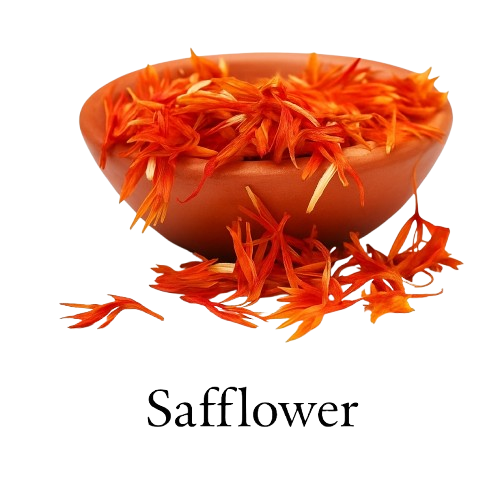
Real Saffron
Color: Deep red threads with orange tips.
Shape: Slightly trumpet shaped, with a gentle curve and a tiny split at one end.
Aroma: Earthy, slightly sweet, and rich.
Taste: Slightly bitter but complex, not sweet or herbal.
Dye Test: When soaked in warm water, it releases a rich golden-yellow color slowly and evenly (not bright red or instantly)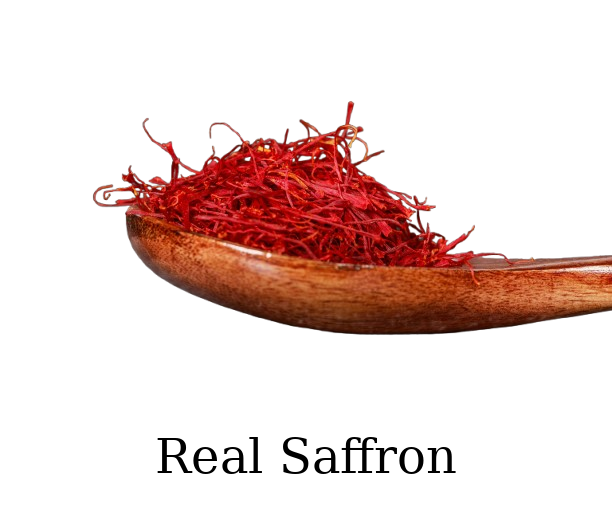
Cultivation
How We Grow Saffron Sustainably, Ethically, and in Harmony with Nature, Together as a Family
Care
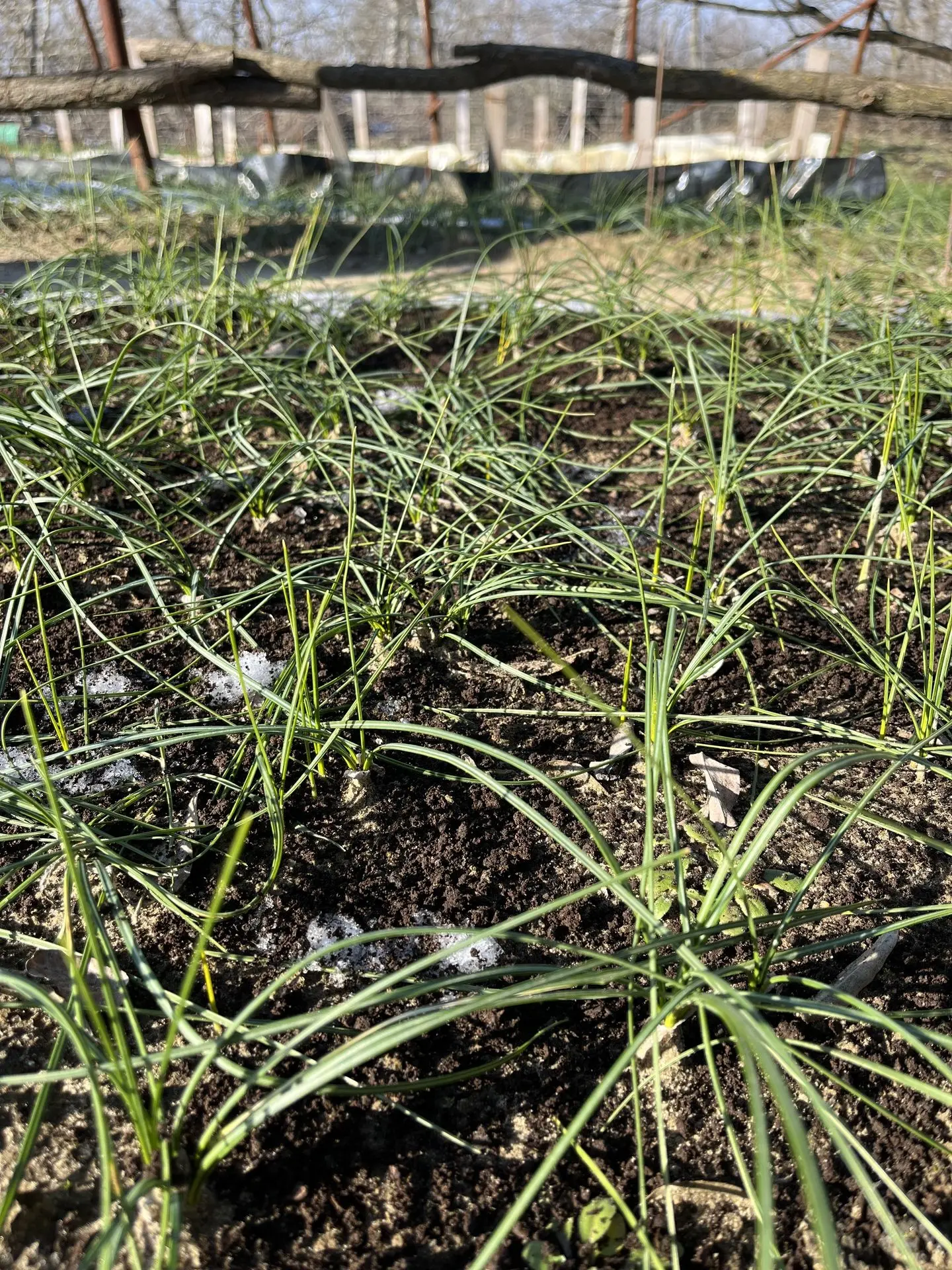
Our saffron begins with meticulous care, nurtured in mineral-rich soil and natural sunlight.
Blooming
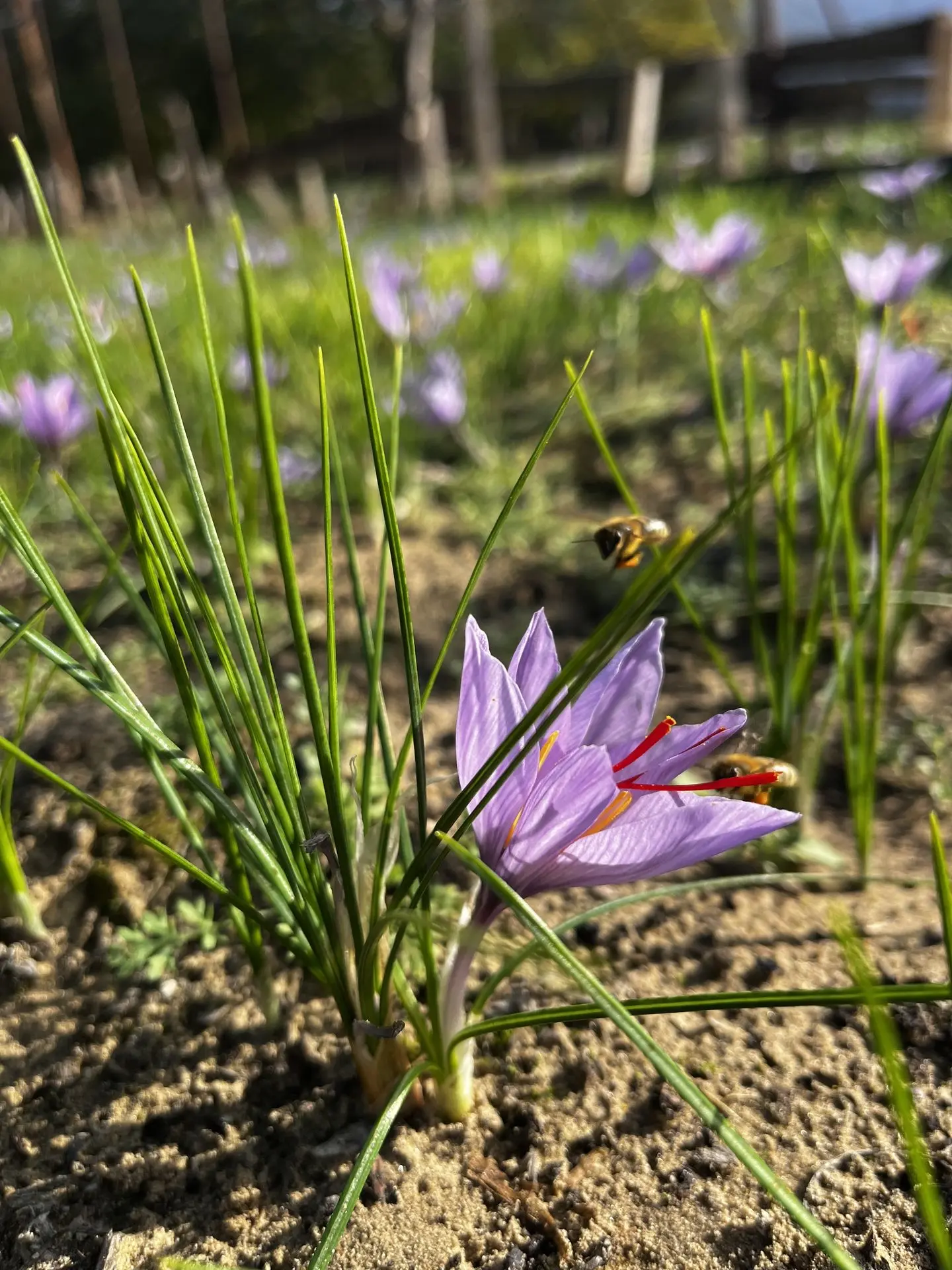
As November arrives, vibrant purple flowers emerge in full splendor, signaling harvest time.
Harvesting
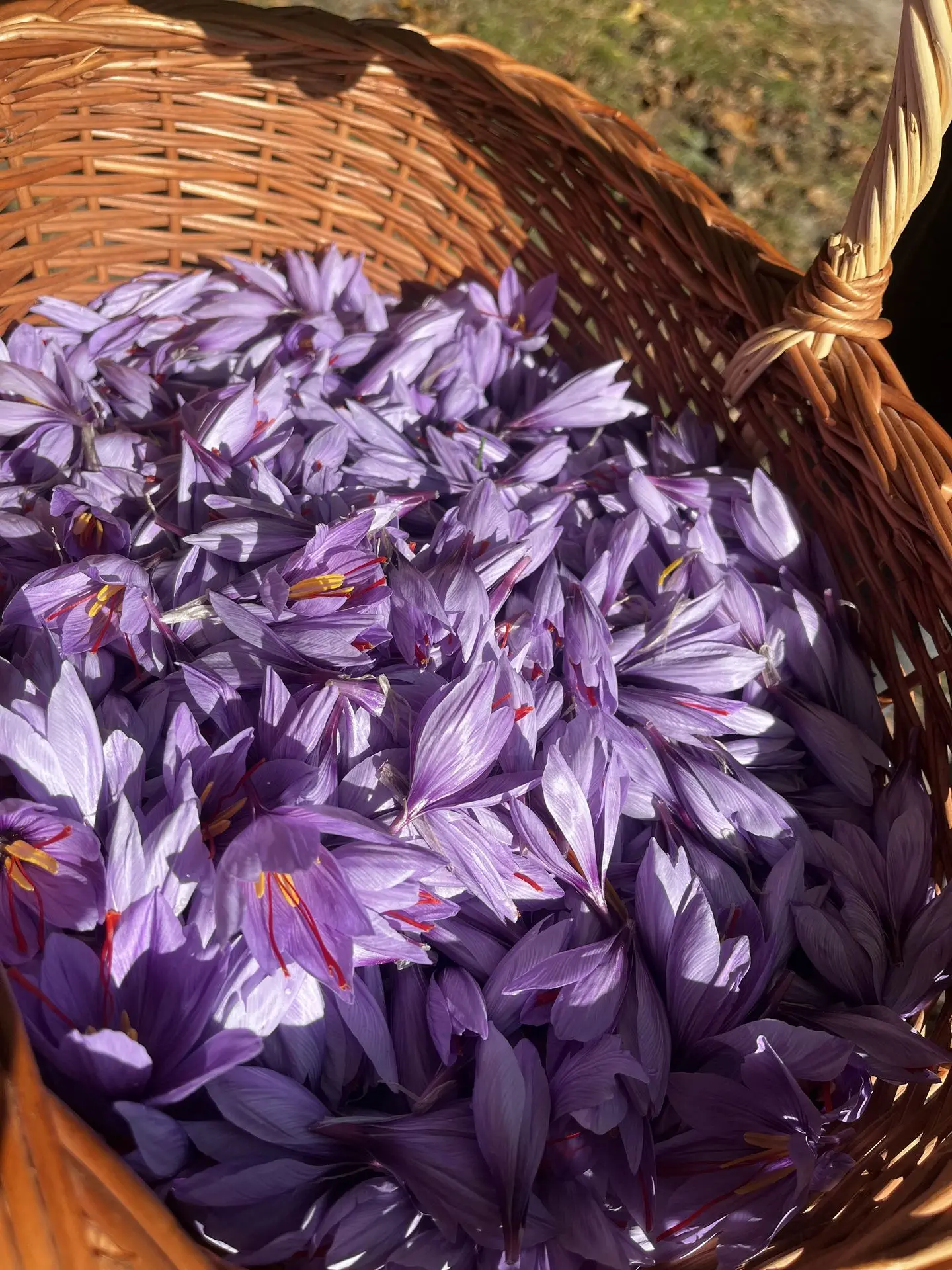
Each delicate flower is handpicked at dawn to preserve its peak aroma and potency.
Stigmas
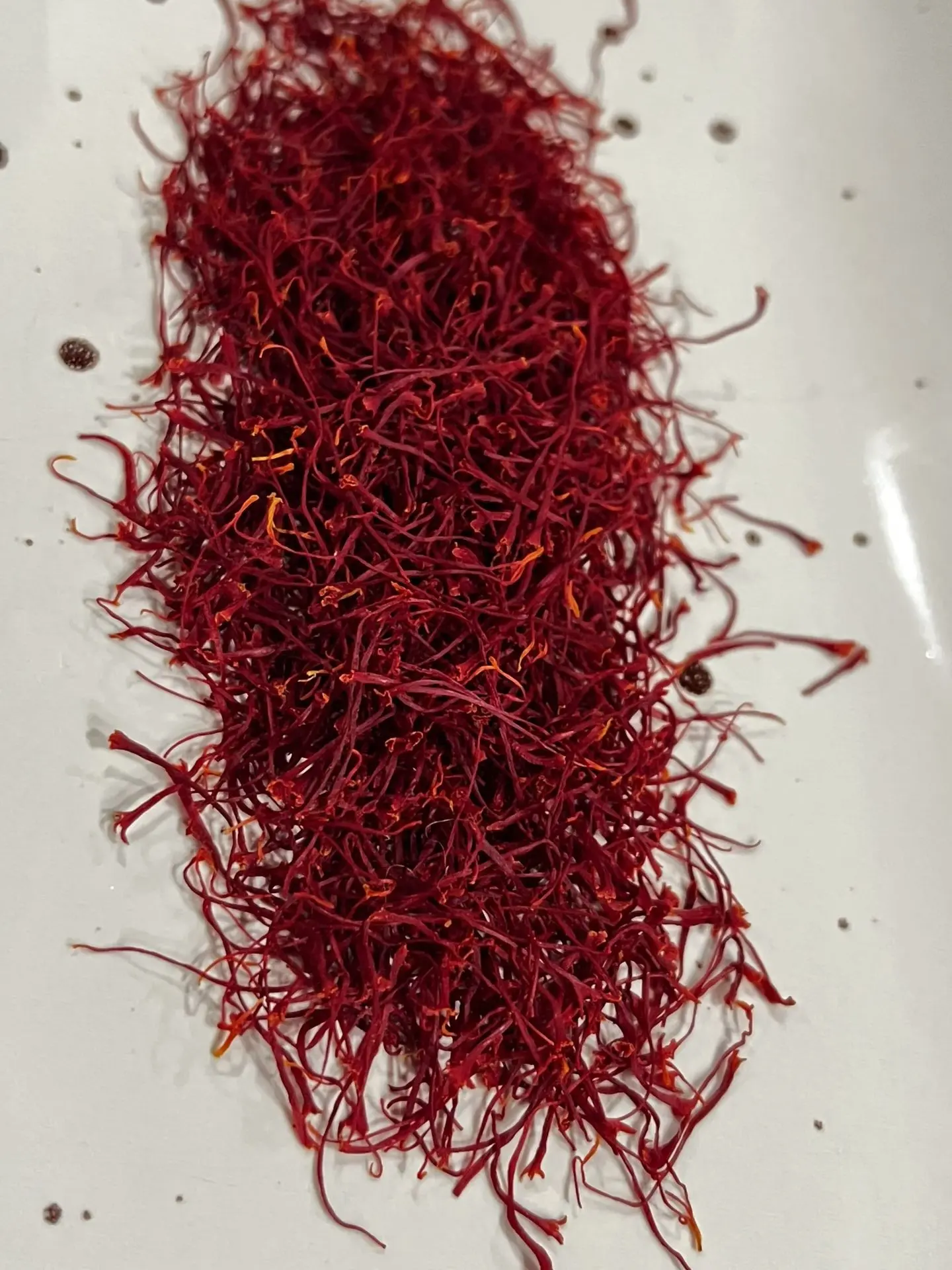
The crimson stigmas are gently separated by hand, ensuring purity and maximum flavor.